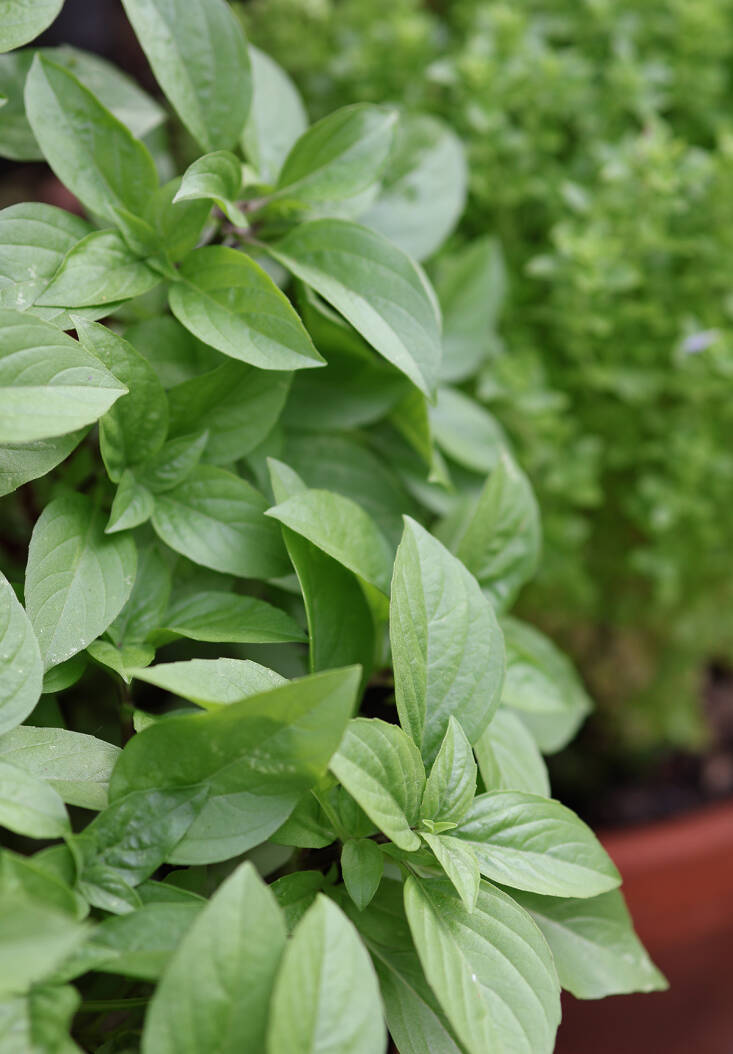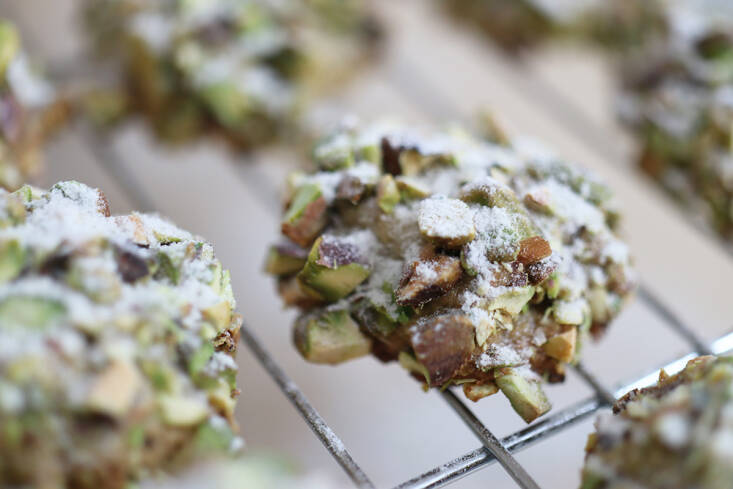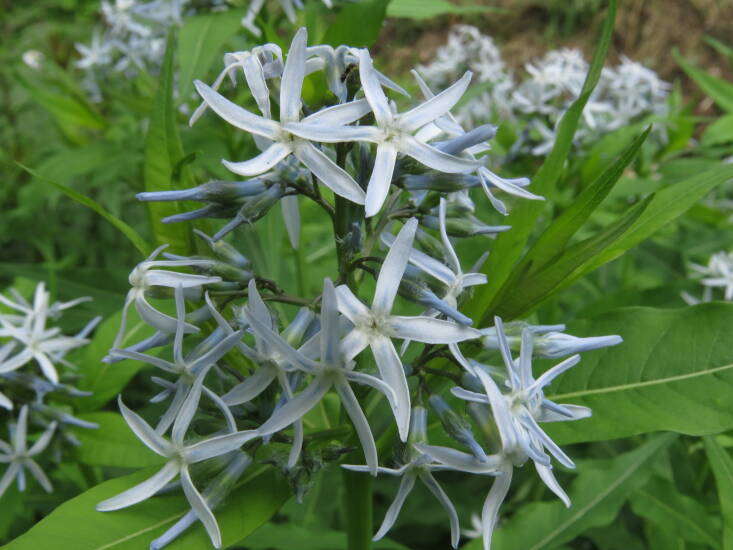Culinary herbs add freshness and flavor to our meals. Growing them at home means a quick trip to the garden or to the pot at the front door can yield a handful of aromatic goodness. While it is often assumed that herbs require full sun to thrive, many herbs prefer to grow in shade, or at least in partial shade. It helps to know where they are from originally, to understand why. These shade-loving herbs include plants native from regions as diverse as the Mediterranean, North America, and Southeast Asia. Some of them are deeply familiar, and others may be more surprising.
Here are 13 herbs for shade that are staples in my kitchen. If you have a favorite shade herbs that you don’t see here, let us know in the comments.
Basil
Above: Thai basil
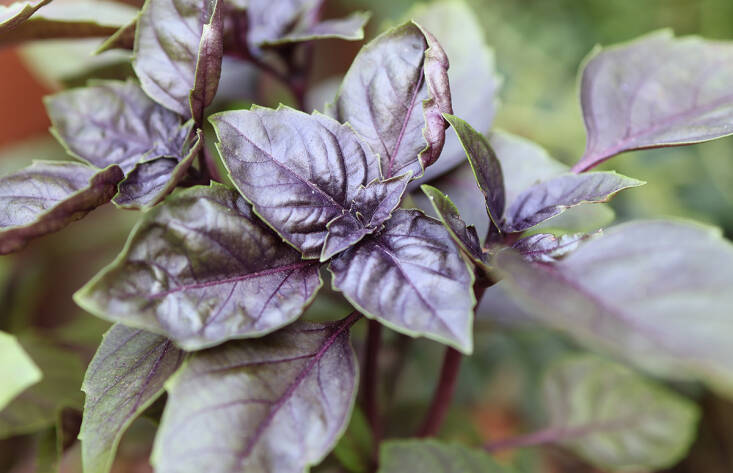 Above: Purple basil
Above: Purple basil
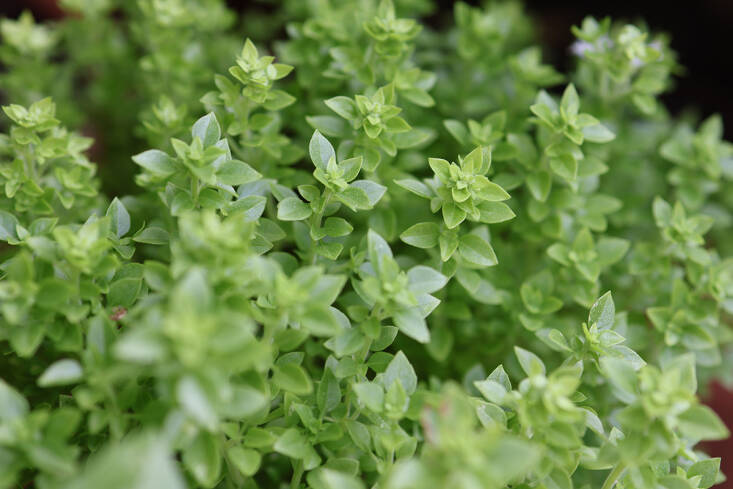 Above: Greek basil
Above: Greek basil
It took me years to learn that basil appreciates shade where summers are very hot. It begins to make sense when you realize that Ocimum species are native to tropical Asia and Africa, which conjures leafy forests. While basil will grow in full sun (with adequate watering), in hot summer climates it thrives in either full shade, afternoon shade, or dappled shade. The most shade-loving basils in my experience are purple, Thai, and Greek, in that order. Lemon basil also likes shade, while sweet (so-called Italian) basil will take more sun. Purple basil relishes shade, where it is as ornamental as it is delicious. During this very hot July my Thai basil planted in full sun is tall and full of flowers, but wilts twice a day, while the pot in full shade has remained more compact, is bushy with fragrant leaves, and has not bloomed yet; plus, it does not require double watering.
Mint
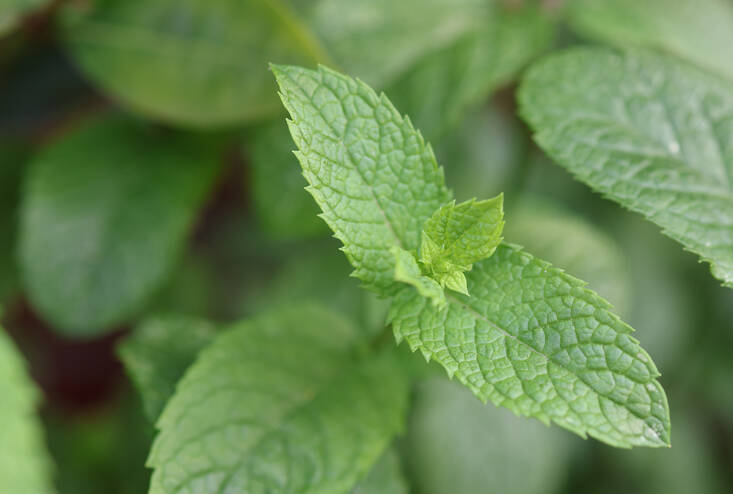 Above: This mint is Mentha spicata.
Above: This mint is Mentha spicata.
The mint we buy in grocery stores is Mentha spicata, a semi-aquatic perennial native to Eurasia and Southwest Asia. With a tendency to proliferate when planted in-ground, contained in a (large) pot it loses its invasive potential. This mint thrives in shade, where it will also guzzle less water than if it is planted in sun. Harvest it by pinching or cutting leaves back to another set of leaves, and water it deeply.
Coriander, or Cilantro
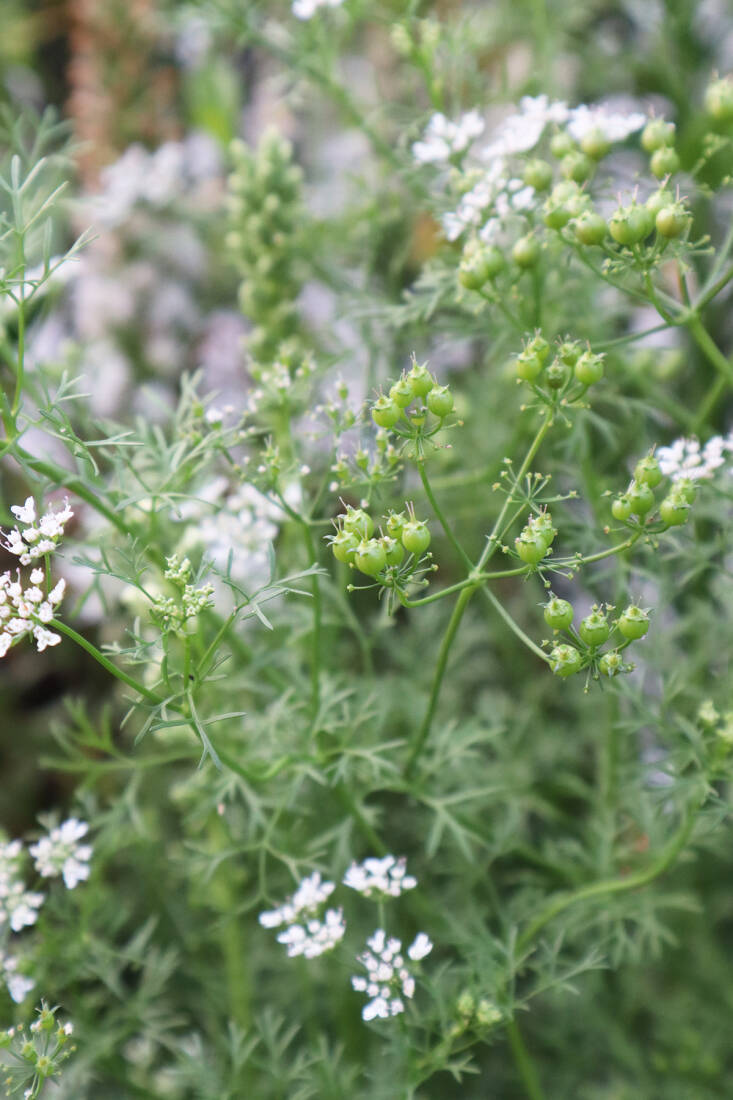 Above: Bolting ain’t bad—cilantro’s flowers turn to delicious coriander seeds.
Above: Bolting ain’t bad—cilantro’s flowers turn to delicious coriander seeds.
The herb cilantro (Coriandrum sativum, native to Southern Europe and the Mediterranean) is also known as coriander in English, while in the United States, the seeds are always called coriander. Grown in shade, cilantro is slow to bolt and you will be harvesting its succulent leaves for longer than from a plant in full sun. When it does bloom, the pollinated flowers form citrus-forward seeds, which are an ephemeral delicacy while still green.
Parsley
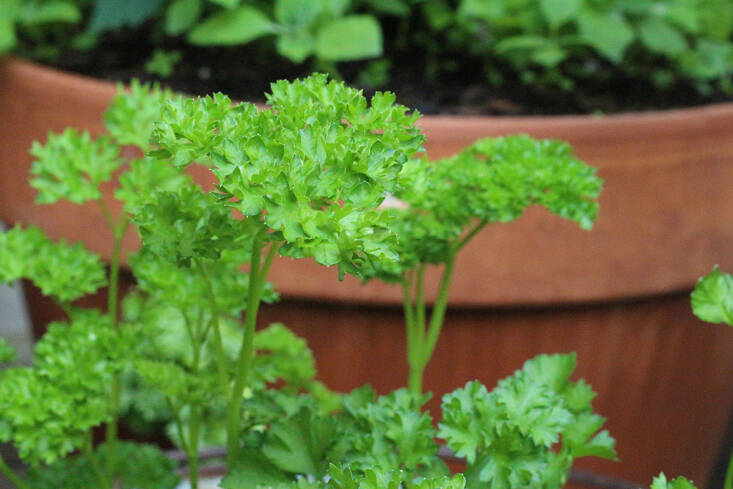 Above: Parsley dislikes humid heat and will appreciate shade.
Above: Parsley dislikes humid heat and will appreciate shade.
Parsley, another soft herb, will flourish in half a day of shade or in high, bright shade. Whether it’s curly or flat-leaf, Petroselinum crispum, native to Europe and parts of the the Mediterranean, will be slower to bolt when shaded.
Bay Leaf
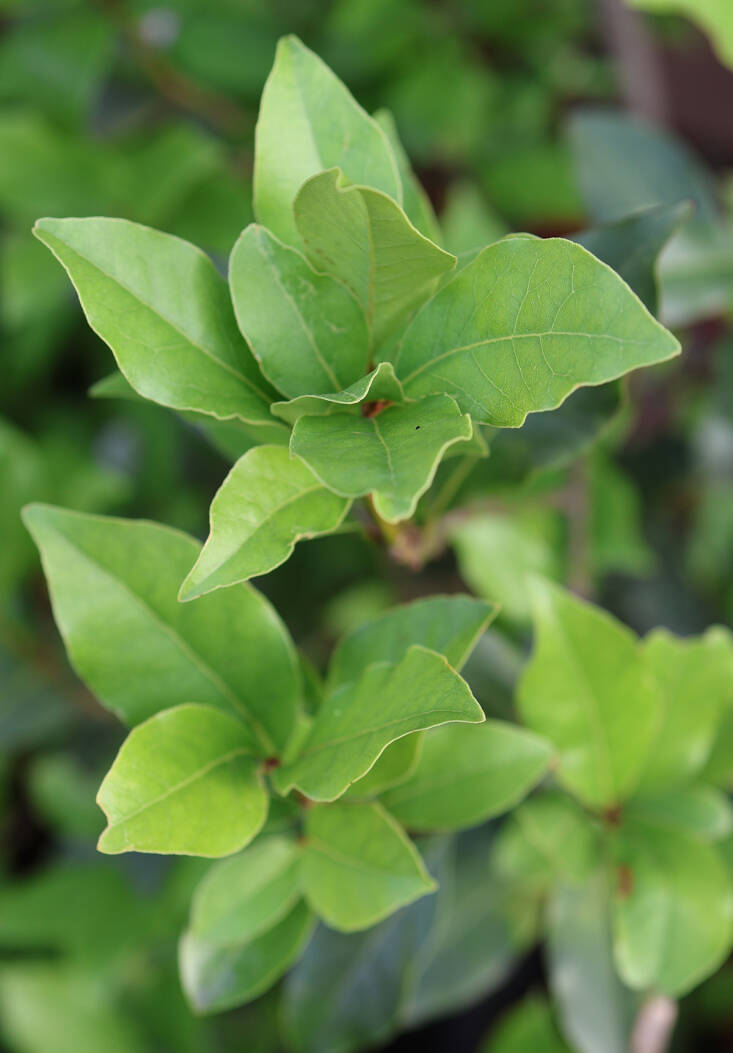 Above: Fresh bay leaves are intensely perfumed.
Above: Fresh bay leaves are intensely perfumed.
When we think of shade-loving herbs, bay, a Mediterranean native, seldom comes to mind. But bay trees (Laurus nobilis) are at home in shaded ravines around the Mediterranean. They like to have cool feet. While they grow happily in full sun, hot-summer bay trees find shade even better, especially if they are grown in pots without access to ground water. Keeping them contained also means they can be moved indoors during freezing winters, or kept as a houseplant. Fresh bay leaves smell incomparably better than the dried version.
Read more about growing bay here: The Indoor Bay Tree: Perfect Houseplant?
Perilla (Sesame Leaf, Beefsteak Plant, Korean Shiso, and Japanese Shiso)
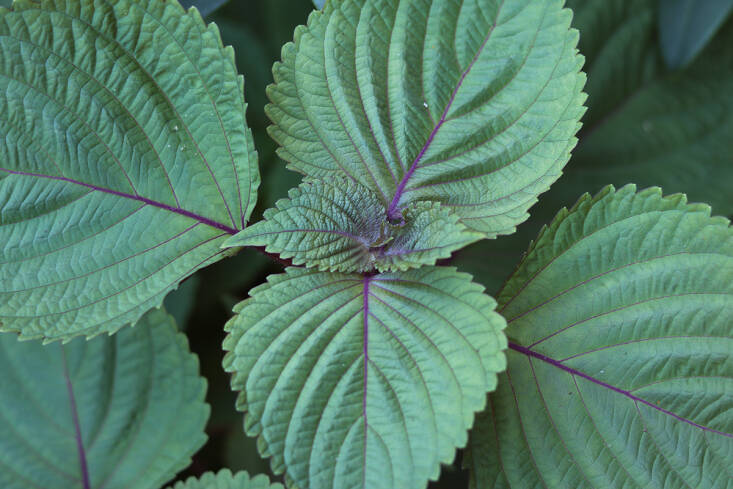 Above: Perilla frutescens subsp. frutescens is known as sesame leaf, beefsteak plant, and Korean perilla.
Above: Perilla frutescens subsp. frutescens is known as sesame leaf, beefsteak plant, and Korean perilla.
Perilla’s many common names can become confusing. But both subspecies of aromatic Perilla frutescens grow very well in shade. Sesame leaf (beefsteak plant, Korean shiso) is Perilla frutescens subsp. frutescens and can be purple or dark green, with neatly toothed leaf-edges.
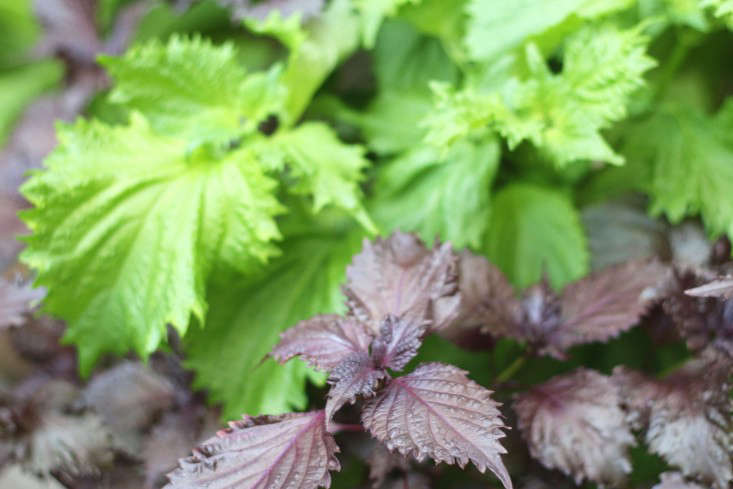 Above: Shiso has frilly edges and floppier mature leaves and is either lime-green or deep purple.
Above: Shiso has frilly edges and floppier mature leaves and is either lime-green or deep purple.
Galangal
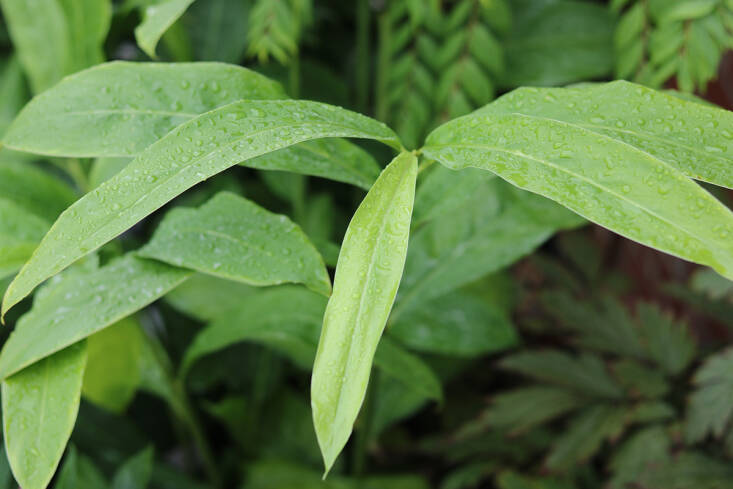 Above: The leaves of galangal.
Above: The leaves of galangal.
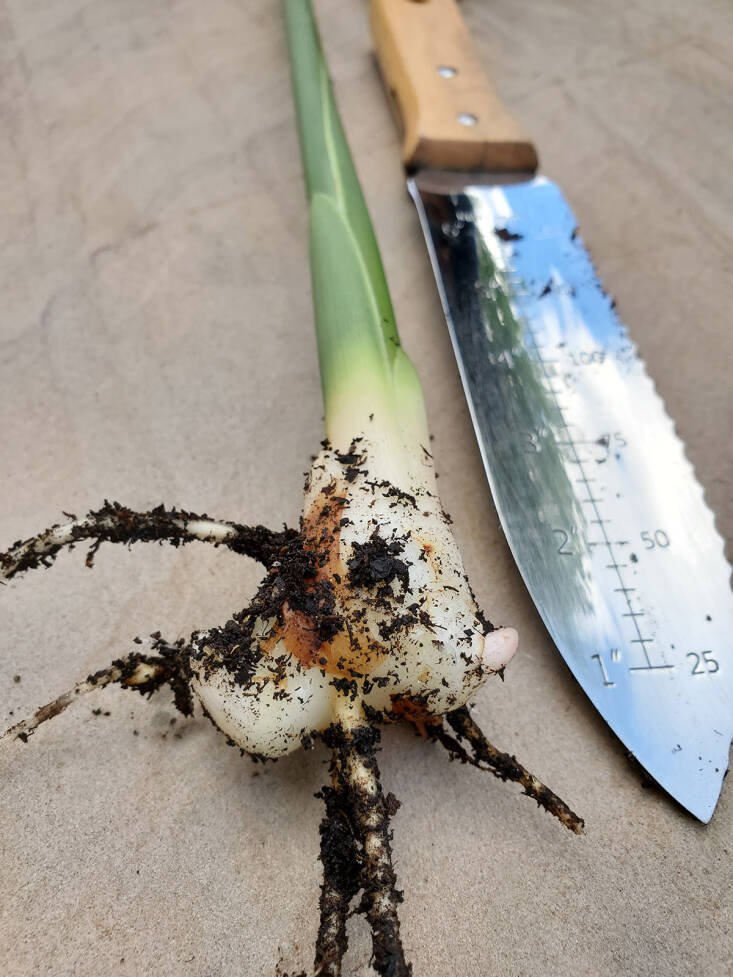 Above: A freshly-dug galangal rhizome.
Above: A freshly-dug galangal rhizome.
A true tropical herb native to South and Southeast Asia, galangal’s leaves resembles its ginger cousins’. In cold climates, galangal (Alpinia galanga) can be container-grown and brought indoors when nights fall below 50°F. It makes a surprisingly lush houseplant during the winter months. Once a year I divide the plants, harvest and clean half of the deeply aromatic galangal rhizomes, and freeze them in small portions to deploy in curry pastes and dressing during the year (I microplane them when needed).
Myoga Ginger
 Above: The leaves of myogo on my Brooklyn terrace this July.
Above: The leaves of myogo on my Brooklyn terrace this July.
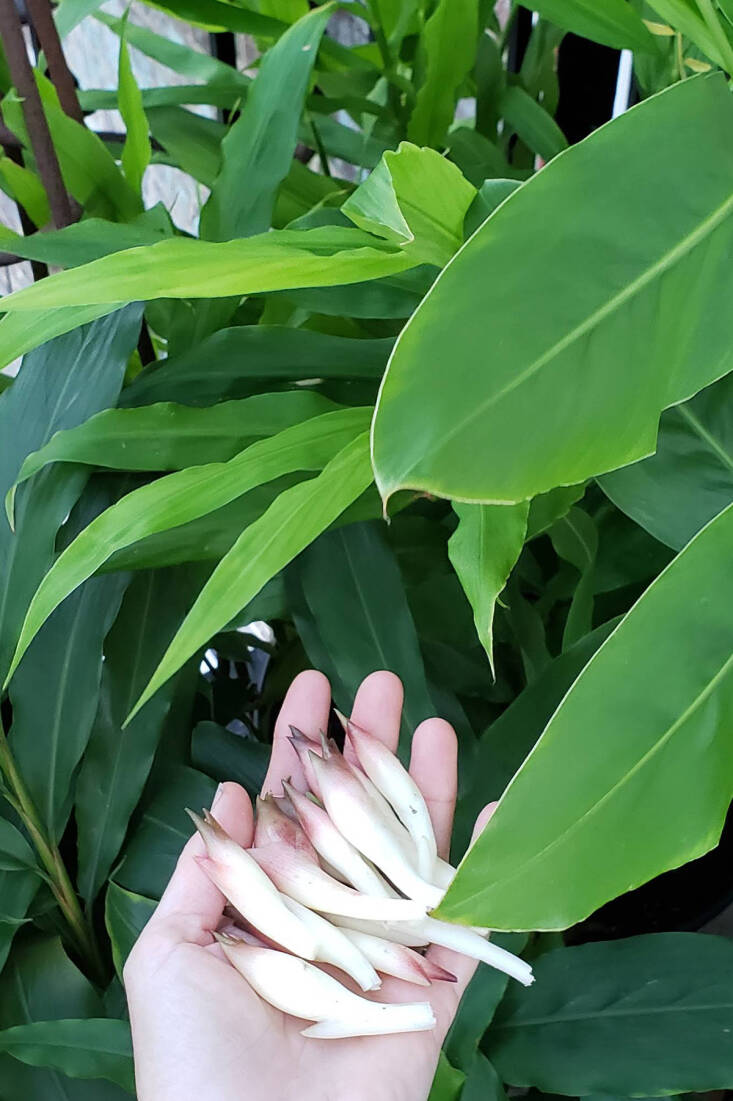 Above: Myoga buds form in autumn at soil level.
Above: Myoga buds form in autumn at soil level.
Myoga ginger (Zingiber myoga) is the surprise-plant that looks like a tropical plant but that is hardy down to USDA zone 7 (at least). It is native to East Asia, and needs a cold winter. My own pot-grown myoga overwinters indoors when it is dormant because the freeze-thaw cycle outdoors can cause waterlogged roots, but in-ground plants are fine outside, as long as they are protected from winter winds. Their famous (and expensive) buds begin to appear in autumn, at soil level. Harvest them while tightly closed.
Learn more here: Myoga Buds: How to Grow the Autumn Asian Delicacy.
Ginger
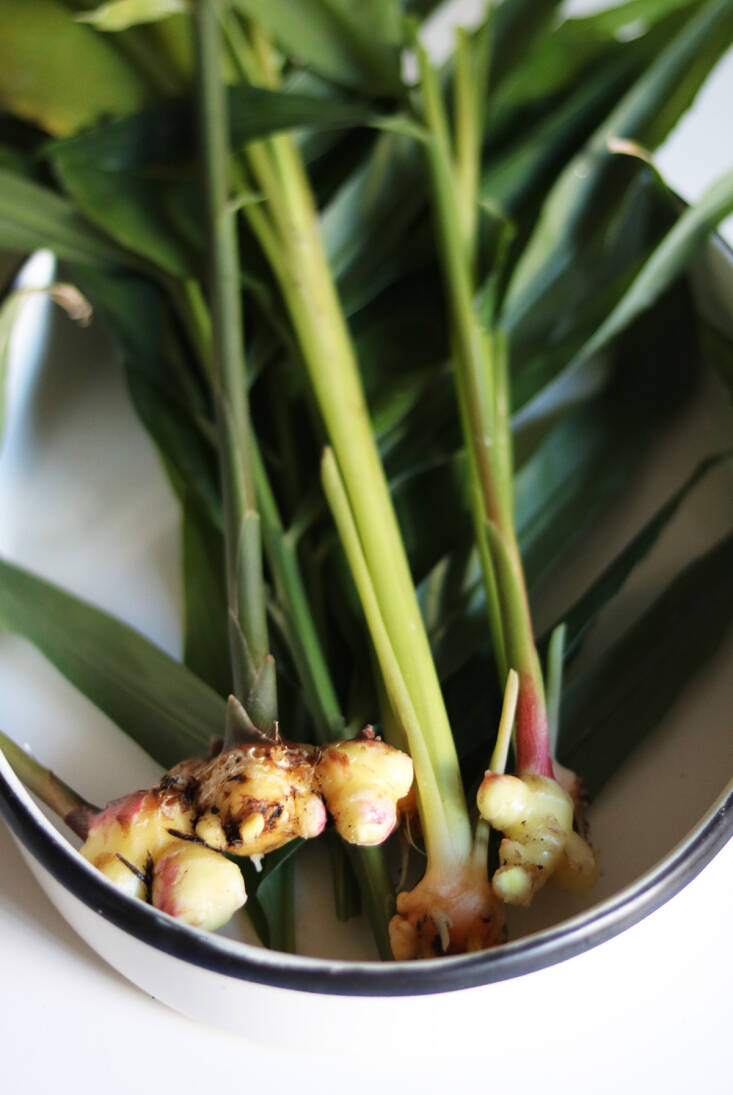 Above: Fresh ginger and turmeric rhizomes from container-grown plants.
Above: Fresh ginger and turmeric rhizomes from container-grown plants.
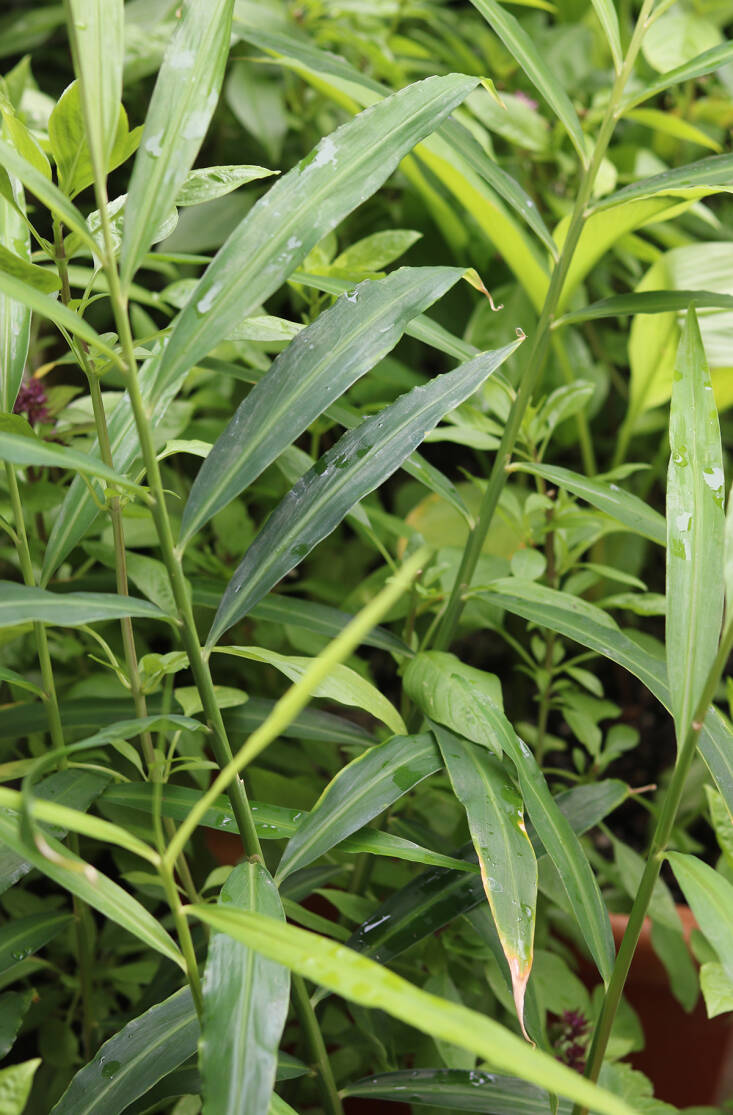 Above: My container-grown ginger in full shade.
Above: My container-grown ginger in full shade.
In climates with cold winters, ginger (Zingiber officinale, thought to be native to Southeast Asia) can be grown as an annual in full shade. Plant ginger rhizomes out when night time temperatures are reliably about 50°F, and the new crop of tender ginger will be harvestable by fall, when you dig up the entire plant for its fresh rhizomes. In-ground ginger will be bigger and more prolific. If planted in a container, use as large a pot as your pace and budget can afford. Turmeric (Curcuma longa) can be grown the same way. In warmer climates—USDA zone 8 and higher—both plants can be grown as perennials.
Kencur, or Sand Ginger
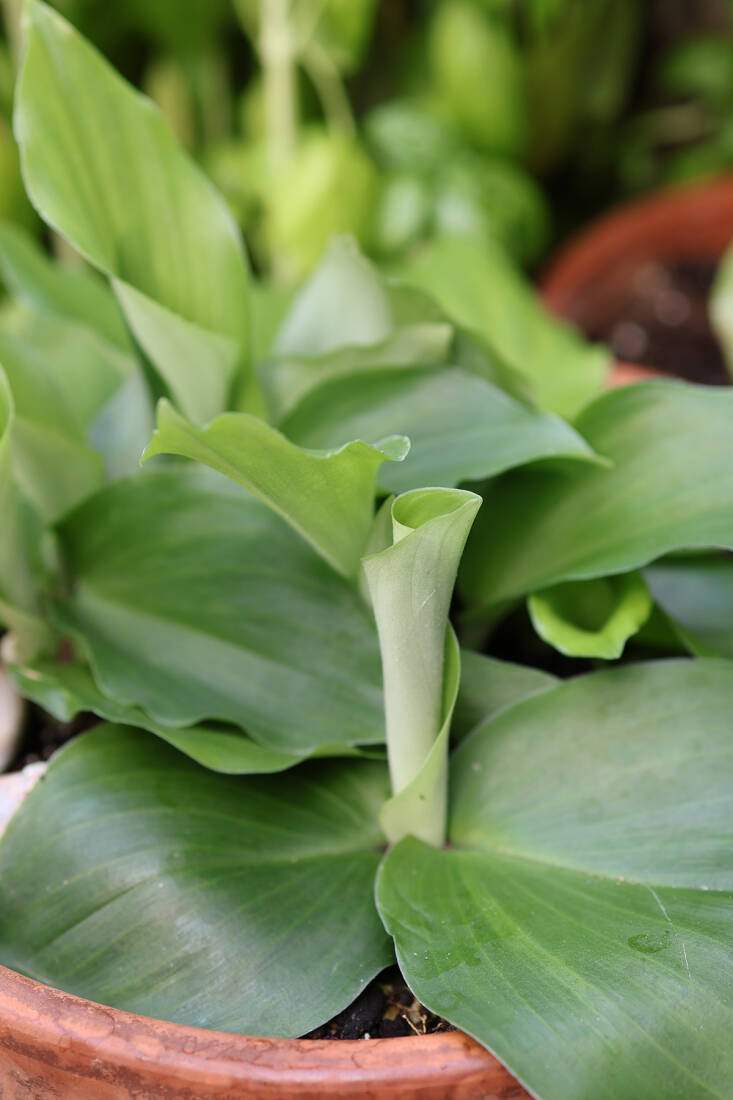 Above: The new leaves or kencur unfold like crisp green cigars.
Above: The new leaves or kencur unfold like crisp green cigars.
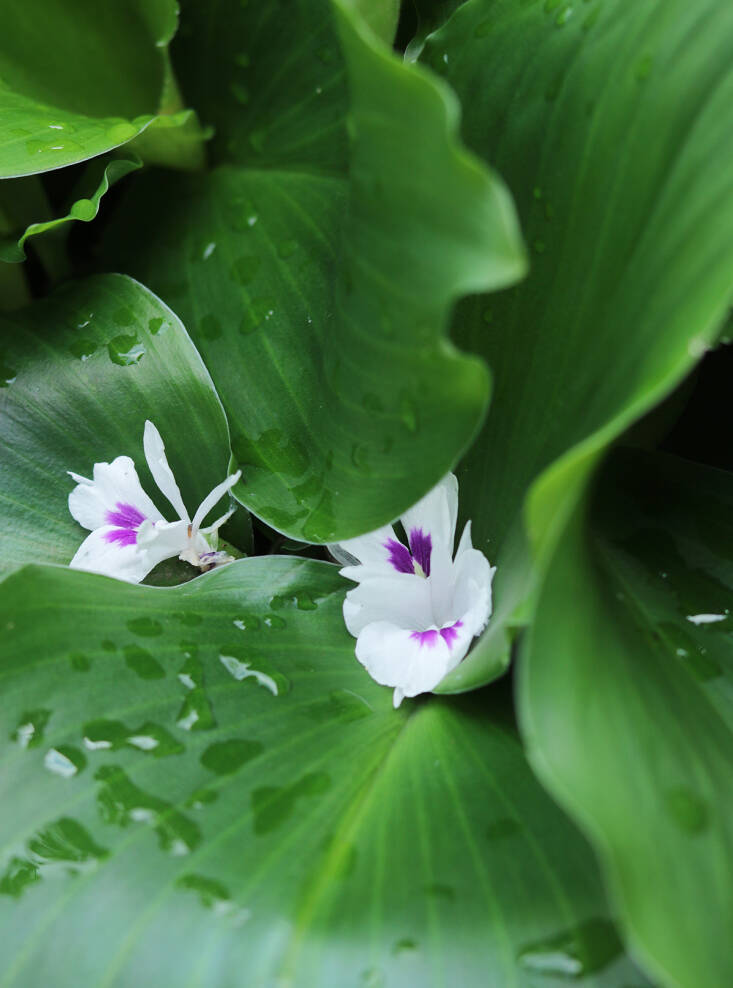 Above: the orchid-like flowers appear in late summer.
Above: the orchid-like flowers appear in late summer.
Of all the tropical herbs mentioned here, sand ginger (Kaempferia galanga) has the prettiest flowers. The plant hates full sun, which will makes its lush leaves curl up in protest. This shade-loving forest herb reaches its leafy peak in late summer after emerging slowly in spring. It must overwinter indoors unless you garden in USDA zones 9 or higher. The rhizome and leaf are used Indonesia and Malaysia. The succulent leaves are scented and mildly spicy, and are delightful shredded into salads, or cooked slowly in Southeast Asian style curries. They also flavor water and drinks very effectively.
Makrut, or Thai Lime Leaf
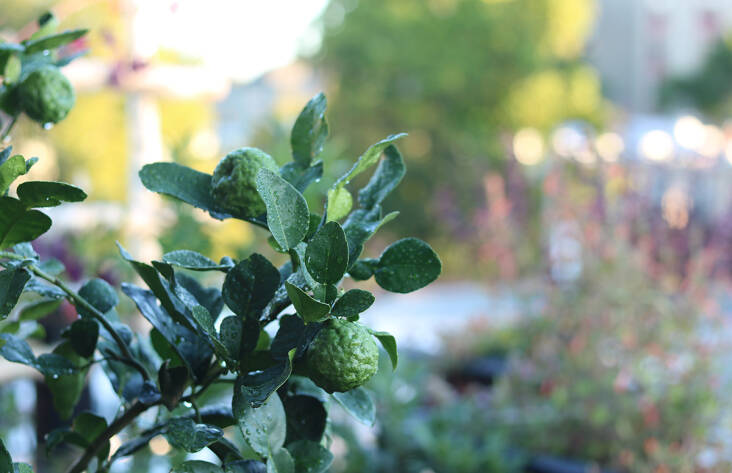 Above: While its knobbly fruit is a bonus, Thai lime leaves are indispensable in Thai salads and curries.
Above: While its knobbly fruit is a bonus, Thai lime leaves are indispensable in Thai salads and curries.
Thai lime or makrut (Citrus hystrix) is well-known for its double leaves that perfume everything from gingery salad dressings, to summer gin and tonics, to slow-cooked curries. A forest dweller in Southeast Asia, Thai lime is very comfortable in shade. In regions with cold winters the trees must overwinter indoors, which is easily done if they are container-grown.
Curry Leaf
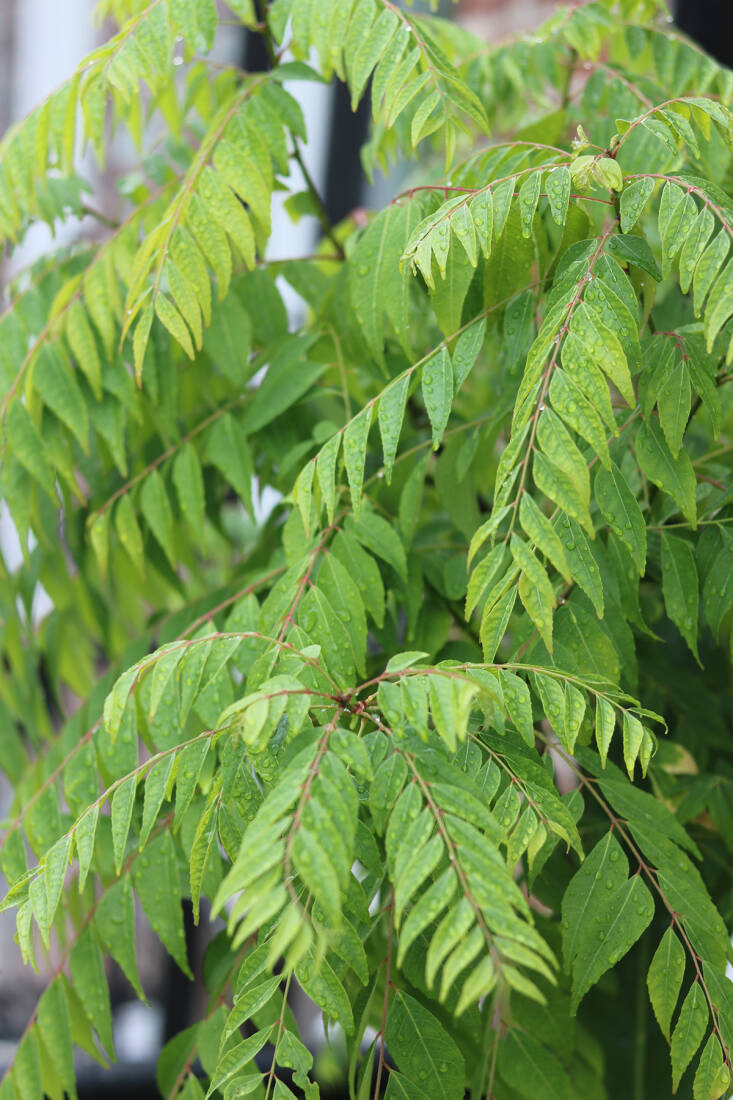 Above: Curry leaf tree on our Brooklyn terrace.
Above: Curry leaf tree on our Brooklyn terrace.
The fragrant leaflets of curry leaf (Murraya koenigii) can be yours, fresh. Curry leaf grows well in high shade or morning sun, and hates only one thing: overwatering. This South Asian native should overwinter indoors where winters are cold, but can br grown outdoors in UDA zones 9 or higher.
Spicebush
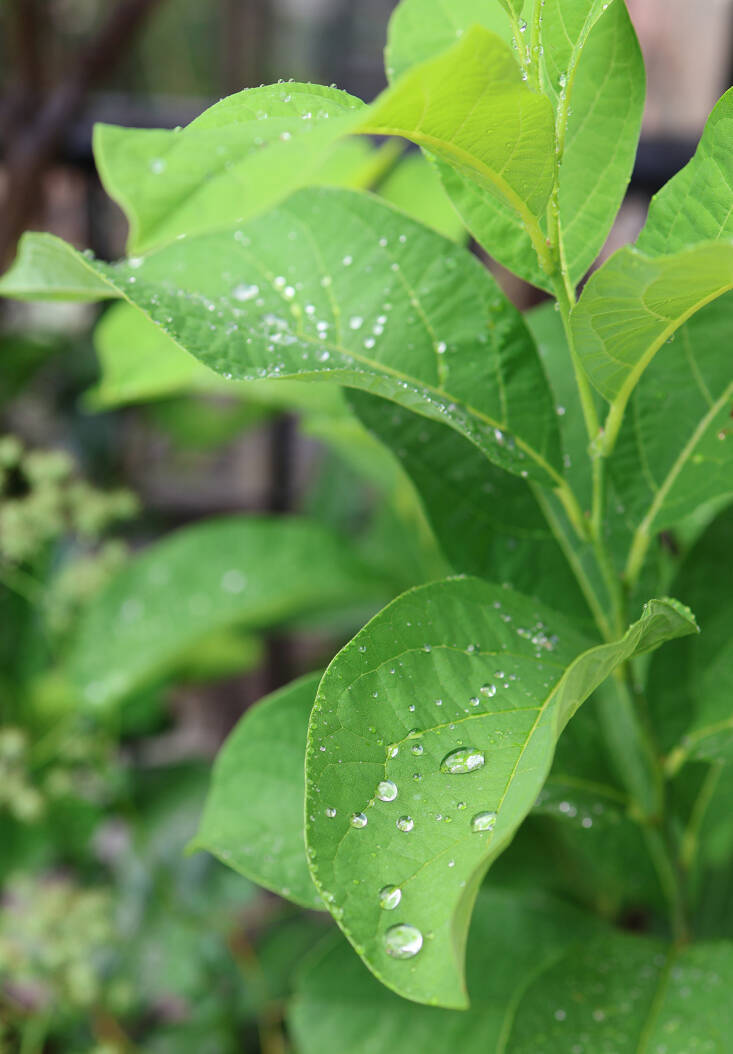 Above: The leaves of spicebush smell strongly like orange zest, but have a unique flavor.
Above: The leaves of spicebush smell strongly like orange zest, but have a unique flavor.
The leaves of Lindera benzoin, an understorey tree native to the Eastern US, are as scented as citrus zest. When they are new and tender in spring they are an aromatic addition to herb salads, while the more mature lend their flavor to marinades and slow stews. Use them wherever orange zest would work. The female trees’ fruit are the better known spice, but if you have only a male, start appreciating the leaves of this powerfully good native herb. Spicebush is hardy from USDA zones 4 to 9.

